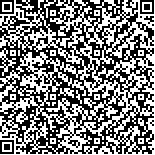| Quote
: |
范丽红,方园,黄河,曹佳男,欧阳里知,刘密,常小荣.针刺与艾灸治疗慢性萎缩性胃炎的多中心前瞻性临床研究[J].湖南中医药大学学报英文版,2020,40(9):1060-1064.[Click to copy
] |
|
| |
|
|
| This paper
:Browser 1873times Download 432times |
| 针刺与艾灸治疗慢性萎缩性胃炎的多中心前瞻性临床研究 |
| 范丽红,方园,黄河,曹佳男,欧阳里知,刘密,常小荣 |
| (湖南中医药大学针灸推拿学院, 湖南 长沙 410208;长沙民政职业技术学院, 湖南 长沙 410208;湖南中医药大学针灸推拿学院, 湖南 长沙 410208;浏阳市中医医院, 湖南 浏阳 410300) |
| 摘要: |
| 目的 观察针刺与艾灸治疗慢性萎缩性胃炎(chronic atrophic gastritis,CAG)的临床疗效。方法 将150例CAG患者随机分为针刺组、艾灸组及药物组,每组50例。针刺组与艾灸组均取主穴足三里、中脘、内关,肝胃不和型配太冲、阳陵泉,脾胃虚寒型配关元、气海;药物组口服维酶素片,一次4~6片,每日3次。3组均连续治疗8周,分别于治疗前、治疗后、治疗后第16周随访观察临床症状积分、中医证候积分。结果 各组患者在治疗后、治疗后第16周随访,临床症状积分均较治疗前下降(P<0.05);治疗8周,各组患者间评分两两比较,差异均无统计学意义(P>0.05);治疗后第16周随访,与药物组相比,针刺组与艾灸组的临床症状积分均降低,差异有统计学意义(P<0.05),针刺组与艾灸组相比临床症状积分差异无统计学意义(P>0.05)。同一证型中医证候积分治疗前后比较,脾胃虚寒型的艾灸组治疗后中医证候积分低于针刺组与药物组(P<0.05),肝胃不和型的针刺组中医证候积分低于艾灸组与药物组(P<0.05)。结论 针刺、艾灸及药物治疗均能改善CAG患者的症状,针刺与艾灸治疗的远期效果更佳,且艾灸对脾胃虚寒型CAG效果更好,针刺对肝胃不和型CAG更具优势。 |
| 关键词: 慢性萎缩性胃炎 针刺 艾灸 脾胃虚寒型 肝胃不和型 足三里 中脘 内关 |
| DOI:10.3969/j.issn.1674-070X.2020.09.003 |
| Received:May 11, 2020 |
| 基金项目:国家重点基础研究发展计划(973计划)项目(2015CB554502);国家自然科学基金项目(81574082)。 |
|
| Acupuncture and Moxibustion in the Treatment of Chronic Atrophic Gastritis: A Multicenter Prospective Cohort Study |
| FAN Lihong,FANG Yuan,HUANG He,CAO Jianan,OUYANG Lizhi,LIU Mi,CHANG Xiaorong |
| (College of Acupuncture-Moxibustion and Tuina, Hunan University of Chinese Medicine, Changsha, Hunan 410208, China;Changsha Social Work College, Changsha, Hunan 410000, China;College of Acupuncture-Moxibustion and Tuina, Hunan University of Chinese Medicine, Changsha, Hunan 410208, China;Liuyang City Traditional Chinese Medicine Hospital, Liuyang, Hunan 410300, China) |
| Abstract: |
| Objective To observe the clinical effect of acupuncture and moxibustion on chronic atrophic gastritis (CAG). Methods A total of 150 patients with CAG were randomized into a acupuncture group, a moxibustion group and a drug group, with 50 cases in each group. The acupuncture group and the moxibustion group took the main points of Zusanli (ST36), Zhongwan (RN12), Neiguan (PC6). Patients with liver-stomach disharmony were treated plus Taichong (LR3) and Yanglingquan (GB34). Those with deficient cold of spleen-stomach were added Guanyuan (RN4) and Qihai (RN6). In the drug group, oral vitasin tablets were taken 4-6 tablets per time, 3 times a day. Each group was treated continuously for 8 weeks. The scores of clinical symptom and TCM syndrome score were observed in the 3 groups before treatment, after 8 weeks of treatment and 24 weeks of inclusion follow-up. Results After 8 weeks of treatment and 24 weeks of inclusion follow-up, the scores of clinical symptom in each were decreased compared with before treatment (P<0.05). After 8 weeks of treatment, pairwise comparisons of scores between each group showed no statistical significance (P>0.05). In 24 weeks of inclusion follow-up, the scores of clinical symptom in the acupuncture group and the moxibustion group were decreased than the drug group, and the difference was statistically significant (P<0.05). There was no statistical significance in comparing the scores of the acupuncture group and the moxibustion group (P>0.05). Compared with the groups of the scores of same TCM syndrome of patients, those with deficiency cold of spleen-stomach syndrome in the moxibustion group was lower than that in the acupuncture group and the durg group (P<0.05). The TCM syndrome scores of patients with liver-stomach disharmony in the acupuncture group was lower than that in the moxibustion group and the drug gourp (P<0.05). Conclusion Acupuncture, moxibustion and drug treatment can effectively improve the symptoms of CAG patients, and the long-term efficacy is much better for acupuncture and moxibustion. Moreover, moxibustion has better effects on deficiency cold of spleen-stomach syndrome of CAG patients and acupuncture shows superiority on liver-stomach disharmony syndrome of CAG patients. |
| Key words: chronic atrophic gastritis acupuncture moxibustion deficient cold of spleen-stomach liver-stomach disharmony Zusanli (ST36) Zhongwan (RN12) Neiguan (PC6) |
|

二维码(扫一下试试看!) |
|
|
|
|


